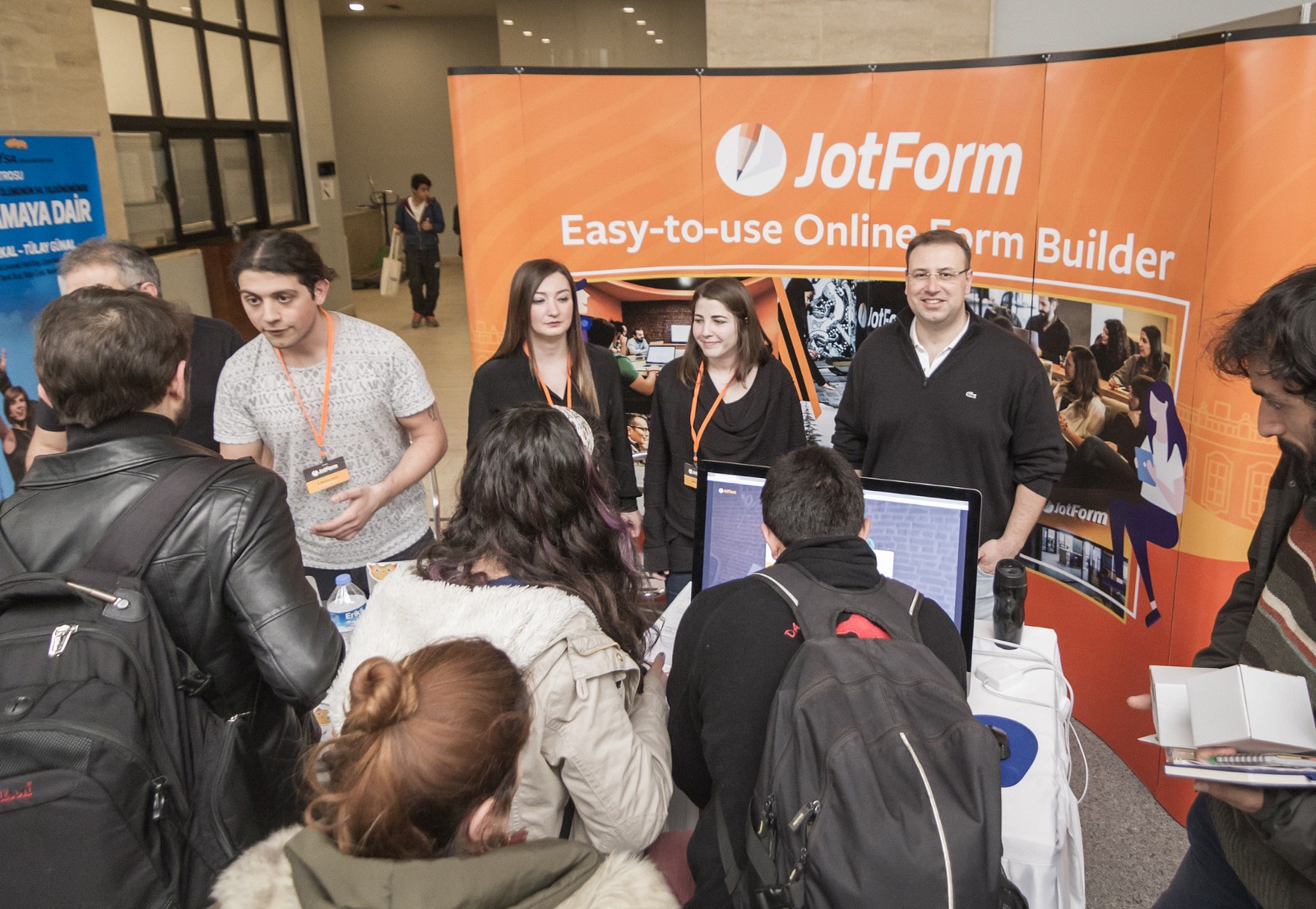Before Amazon bought Zappos.com for $1.2 billion, the online shoe retailer was already known for two things: exceptional customer service and a vibrant company culture.
As CEO Tony Hsieh once said, “Zappos is a customer service company that just happens to sell shoes.”
Zappos empowers its call center staff to make emotional connections and to wow their customers in every interaction.
That explains the service-driven reputation.
But how do you create a strong, healthy culture — especially as your company grows?
Well, Zappos defined 10 core values that guide the whole organization. It’s their hiring process, though, that really stands out.
Zappos has two different interview types. The first explores the candidate’s abilities, experience, and team fit. The usual stuff.
Next, the HR department does another round, purely to evaluate culture fit. As Hsieh told Forbes back in 2010, you have to pass both interview types to get the job:
We’ve rejected many talented people who we know would have made an immediate impact on our top or bottom line. Because culture is our number one priority, we’re willing to give up short-term profits or revenue growth to make sure we have the best culture. In fact, after orientation we offer people $2,000 not to work at Zappos. The ones who stay are right for our culture.
Also, when an applicant flies in for an interview, the company sends a shuttle to the airport. Zappos leaders will later ask the driver if the person was nice, or if they were rude or standoffish.
No matter how talented the candidate, rude people never make the cut.
Talk about living your culture — and your values.
As I’ve grown Jotform from a solo venture into a company with 110 employees, I’ve learned a lot about culture.
I’ve made some mistakes, too. That’s why I admire culture-driven companies like Zappos, Southwest Airlines, and Warby Parker.
I’ll spare you our big mistakes, but here’s what I know for sure about hiring great people and nurturing a healthy startup culture.
Ambitious companies attract ambitious people
Talent is the multiplier. The more energy and attention you invest in it, the greater the yield.
– Marcus Buckingham, author and business consultant
It starts at the roots. Whether you’re selling airline tickets, eyeglasses, software, or burritos, you need to have a great product.
After all, talented people want to work in organizations that make an impact. They want to change the world — even just a little. And there are many ways to become world class.
There’s a terrific restaurant near our office that changes its menu every month. If you’re an ambitious, creative chef who’s hungry to learn, this is where you want to land.
Even if you provide a “boring” product (like, ahem ahem, web forms), your approach could make it an amazing place to work.
Take JotForm. Our 4 million users live in 192 different countries. We practice continuous improvement, our teams have unmatched independence, and our employees get to really flex and apply their skills. We also hate bureaucracy.
This isn’t an ad; I simply want to illustrate how ambition and impact can take different forms. And I’ll be honest. Even if you do have a great product, it’s still tough to find and hire the right people.
Nurture a healthy and supportive culture
If you are lucky enough to be someone’s employer, then you have a moral obligation to make sure people do look forward to coming to work in the morning.
– John Mackey, CEO, Whole Foods
Culture can be a major asset. It helps you to attract top-notch people and encourages them to stay for the long run.
I know that’s easy to say, but how do you actually do it? I believe in two core elements:
1. Ensure a comfortable work environment
Make sure your office is a place you and your team want to spend time in, even if it’s small. Equip staff with powerful technology, up-to-date equipment, and all the tools they need to work safely and efficiently. Free drinks and snacks don’t hurt (but you don’t need the ping-pong table). All these details are also cheap to provide, relative to employee salaries. Don’t cut corners on your most valuable asset.
2. Always choose positive, collaborative people
I know it might sound simple, but having smart, friendly, talented, positive people lays the foundation for your culture. Good people attract more good people, and you’re also promoting an inspiring work environment. Nothing will send people running for the door faster than a culture of infighting, gossip, and petty competition.
Leverage good word-of-mouth
You’re scrolling through Instagram. In one post, your friend tags a hotel they love. The next post is a sponsored ad for a competing hotel brand.
Which are you more likely to remember and try for yourself?
Real endorsements from our network are powerful. If you love your job, company, or work environment, you’re likely to tell friends and family.
We post our job openings on LinkedIn and online job boards. We’ve also used headhunters for leadership positions. But nothing works better than word-of-mouth.
When valued employees refer their friends and former colleagues, we pay close attention. These are often our best candidates.
We also have a large paid internship program. At the college job fairs we attend, students can immediately apply (through a web form, of course) to join us for the summer, or during a school break.
This way, they get to see our product in action and learn more about the company. In 2018, we’ve already had over 1,000 applications.
Thanks to people who generously spread the word, we’re able to attract lots of candidates and choose the very best.
Interview efficiently and decide quickly
According to a recruiting survey by the National Association of Colleges and Employers, employers hiring new college graduates take, on average, two weeks to make a job offer after an interview.
Beyond new graduates, author and HR expert Liz Ryan says companies should never take more than 3–4 business days to contact or share feedback with candidates after an interview.
We do it the same day. Often, we call the candidate as they’re walking to their car — right after the interview.
If you don’t move fast, there’s a good chance someone else will snap up a great employee. Forget about waiting periods or outdated rules and do it your way.
How is it possible to move so quickly?
Well, we believe in having all the decision makers in the room. Everyone has the chance to observe and ask questions.
After the interview, we have a five-minute discussion. If it’s a long debate, the person is probably not right. But a quick, easy consensus usually means that we’ve found a great fit.
Hire for skills and knowledge
Knowledge and skills are not the same.
Whatever position you’re hiring for, ask the candidate to perform a hands-on task. Over the years, we’ve encountered both “developers” who can’t actually code and dark horses who performed far beyond our expectations.
It’s equally important to talk with the applicant about their chosen field. Can you have an intelligent discussion? Do their ideas and arguments make sense?
Sometimes, people speak in buzzwords but they don’t have real knowledge. They’ve just memorized headlines and jargon.
Ultimately, it’s a matter of balance. Candidates need to have some real skills (and that level will vary by position), but the right person can also acquire what they’re missing.
The same goes for knowledge. Young employees will gain deeper expertise over time, but if they’re truly interested in the topic, they will already have opinions about marketing or data science or design.
One more note: Watch for people with side projects. If a developer has their own app, for example, that’s a great sign. It means they’re ambitious and engaged.
In different fields, this could also be a blog, a podcast, a passion for reading, participation in a professional group, or taking extra classes and workshops.
Culture is always in motion
Leadership is absolutely about inspiring action, but it is also about guarding against mis-action.
– Simon Sinek, author, speaker and marketing consultant
Company culture is like the infinity symbol, or the old chicken-or-the-egg dilemma.
Which comes first: great people who establish a healthy culture, or a healthy culture that attracts great people?
Answer: it doesn’t matter.
People talk about culture as a static entity, but it’s constantly changing. Culture also has its own equilibrium. Sometimes it evolves for the better, and sometimes it needs to be nudged in a better direction.
Internal culture is a topic that can easily fill entire books, but here are my top lessons.
Culture changes as you grow
Our first 10 employees were men. That wasn’t my intention. It just happened, but then I learned about this mistake and realized we needed to attract more women. As the balance (happily) shifted, our company became more professional, just to name one improvement. Change made us stronger. These are the kind of culture shifts that organizations should always embrace.
People influence the culture
Let your staff contribute. Our small, cross-functional teams naturally develop their own cultures — and that’s a good thing. They enrich our entire company and make more interesting and diverse place to work.
Don’t enable incongruent behavior
Just as Zappos measured candidates’ humility and openness by talking to their shuttle drivers, it’s important to weed out both people and actions that don’t match your values.
For example, we care deeply about our users and we take responsibility when they make mistakes.
One day, we were watching a usability test, and an employee joked that the user was stupid. I realized that I had to immediately change the narrative, without publicly chastising the employee.
I told the team that we should assume people are busy and overwhelmed. That’s why our goal is to make a simple, incredibly easy-to-use product.
If we had all laughed, other team members would have assumed that it’s okay to mock our users — and that doesn’t align with our values or our culture.
A company’s culture is the foundation for future innovation. An entrepreneur’s job is to build the foundation.
– Brian Chesky, co-founder and CEO of Airbnb
While I’ve never offered someone thousands of dollars NOT to take a job, we do believe in humility and we reward learning. I’ll also share a little secret.
Every intern — whether they’re studying programming, marketing, UI, design, or business — spends their first week answering customer support questions.
Throughout this process, they are being rated; not just on their skills, but also on how they listen and treat our customers.
Sometimes, they think support work is beneath them. That attitude overshadows their skills and their knowledge.
And those interns will never have a seat in our company.





































Send Comment:
5 Comments:
More than a year ago
OMG !! I haven't read any post more point by point than this . A dedication of appreciation is all together for sharing ? U helped an incredible deal.dissertation helps
More than a year ago
Thanks for sharing such a great piece of information. I'm content with the content.
More than a year ago
Such a great blog! Worth read. Thank you.
More than a year ago
Great article with very good advice.
More than a year ago
Great article! Thank you for your thoughts. It was very interesting.